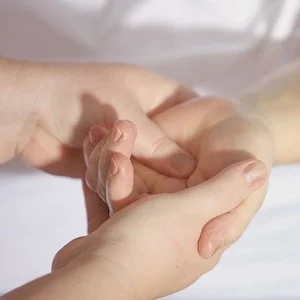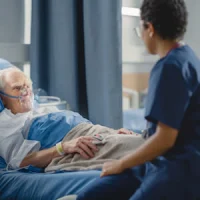Clinical massage and guided imagery may improve patients’ comfort at a very low cost, according to a study published in Critical Care Nurse (CCN), the journal of the American Association of Critical-Care Nurses.
Researchers with Beaumont Health System in Royal Oak, Michigan, USA, found that patients in a progressive (intermediate) care unit reported less pain and anxiety following a massage. Other patients who listened to a guided-imagery recording reported improvements in pain, anxiety and insomnia.
Beaumont Health System routinely offers clinical massage and guided imagery to patients. During the study, patients on one floor of the progressive care unit were offered a 15-minute clinical massage Monday through Friday. A massage therapist used Swedish massage techniques with the patient in their hospital bed, typically involving hand or foot massage or scalp and neck massage, according to the patient’s comfort level.
Patients on the other progressive care unit were invited to listen to an audio recording specially produced for use in the unit that focused on reducing pain and anxiety and promoting sleep. During discharge these patients were asked if they had listened to the 30-minute recording at any time during their hospital stay and, if so, how often. Patients also indicated why they had listened to the recording (for pain, anxiety or insomnia) and if they found it helpful.
The 288 patients who used the interventions – albeit a small percentage of those in the progressive care unit at a single hospital – reported significant improvements in pain, anxiety and insomnia. The results from use of the audio recording show promise in guided imagery as a very low-cost intervention with the potential to reach many patients.
Results
- Pain scores of those patients who indicated pain prior to the massage decreased from a mean of 4.5 to a mean of 2.3 afterward. More than 80 percent indicated a decrease in pain of at least one point after the intervention.
- Results from those patients who indicated some level of anxiety decreased from a mean of 4.0 before the massage to a mean of 1.9 afterward. More than 80 percent indicated a decrease in anxiety of at least one point after their massage.
- Eighty percent of the 45 patients who used the guided-imagery sessions stated that the intervention helped in some way.
“The dramatic improvements in patient self-reported scores in pain, anxiety and difficulty sleeping indicate the positive impact to patients’ well-being,” said Gail E. Patricolo, BA(Hons), GradCertCAM, director of integrative medicine at Beaumont, in a media release. “These interventions can be a practical, cost-effective way of improving patient care, but patients and staff alike first need to know more about them and the potential benefits.”
The study noted that the patient population in the progressive care unit may have affected participation, since many patients may have been too ill to participate.
Source: American Association of Critical-Care Nurses
Image credit: Pixabay
References:
Patricolo GE, LaVoie A, Slavin B, Richards NL, Jagow D, Armstrong K (2017) Beneficial effects of guided imagery or clinical massage on the status of patients in a progressive care unit. Crit Care Nurse, 37(1): 62-9. doi: 10.4037/ccn2017282
Latest Articles
Pain, insomnia, Intermediate Care, anxiety, massage, imagery
Clinical massage and guided imagery may have improve patients’ comfort at a very low cost, according to a study published in Critical Care Nurse (CCN), the journal of the American Association of Critical-Care Nurses.










